Previously on Cameras of Croydon…
This is my third review of a camera model from Aeronautical General Instruments of Croydon, South London, under their AGILUX brand.
The AGIFlex was a 6×6 SLR with a strong resemblance to the Reflex Korell, while the Agimatic was a 35mm leaf-shutter interchangeable lens camera which kept reminding me of the Braun Super Paxette. At the end of my review of the Agimatic I made the comment about the Agima, which was the follow up camera, noting that it was ugly and quite rare. Although they don’t turn up much, a copy came to me in a batch of cameras of unknown functionality. The other three cameras turned out to be a bit of a bust, but the fourth was an Agima and it works!
The Agima
AGILUX followed up their 1958 Agimatic model with an updated model – the Agima. I’ve not found clear dates but I think it must have been released around 1960. The main difference between the Agimatic and the Agima is the coupling of the rangefinder and the larger viewfinder, but it is quite interesting to see the other bits that changed between the two cameras.

The Agima is taller than its predecessor. It loses the central window for the extinction meter and the ring for the exposure calculator (the primitive exposure meter is no great loss). It gains a larger bright frame viewfinder and a longer based coupled rangefinder. The Agima also gets a little ‘leg’ just behind the shutter speed ring.

On the top-plate, the position of the window for the film travel indicator has moved, and the manually set film counter has moved to the top plate. Unlike the one on the one on the Agimatic (visible upside-down under the extinction meter window), it doesn’t rely on being set before the film is loaded.
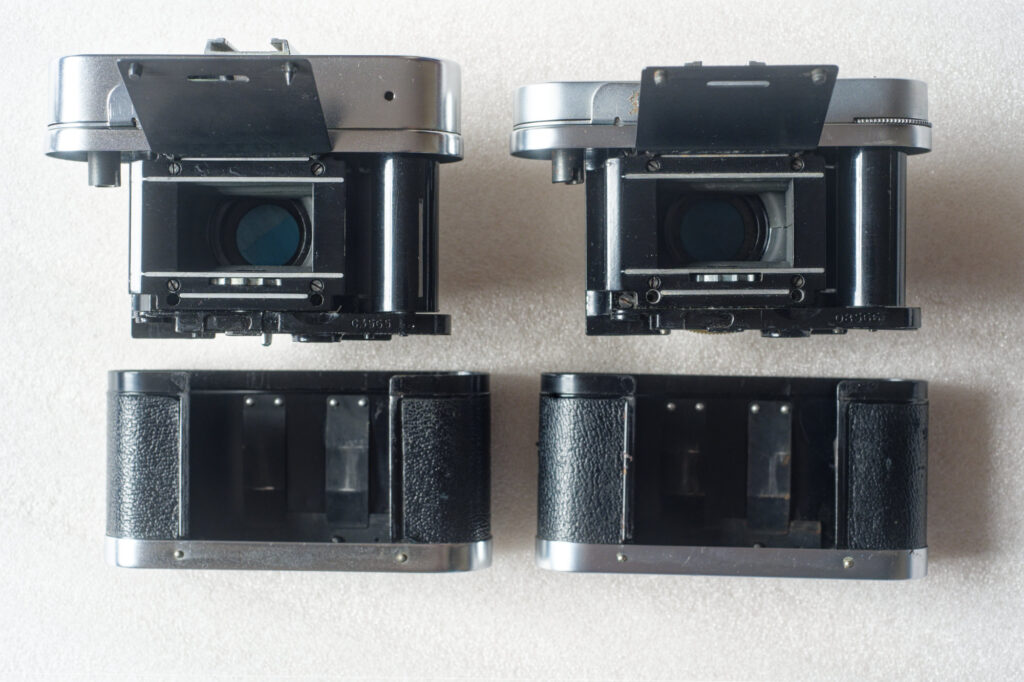
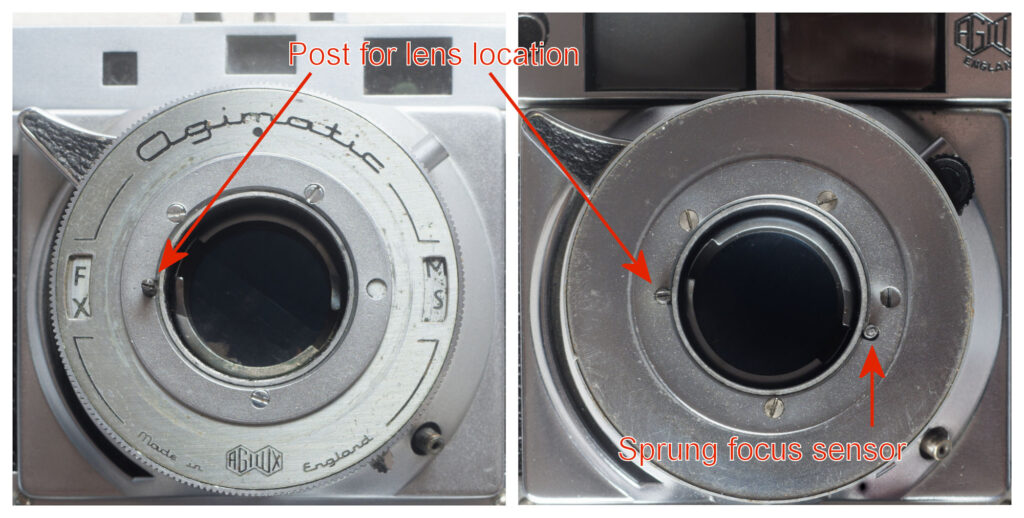
The wider barrel for the lens has led to the abandonment of branding around the shutter. The Agima uses plastic tabs rather than knurled rings for setting shutter speeds, apertures, and focus. The tab for the shutter can be seen top right of the Agima picture. Note that the locating post and bayonet are the same on both cameras, but the Agima has an extra sprung post to read focus info from the attached lens (just below the three O’Clock position on the right image). AGILUX also seem to have inverted the shutter blades for some reason – the lower blade is uppermost on the Agimatic, but the opposite is true for the Agima.
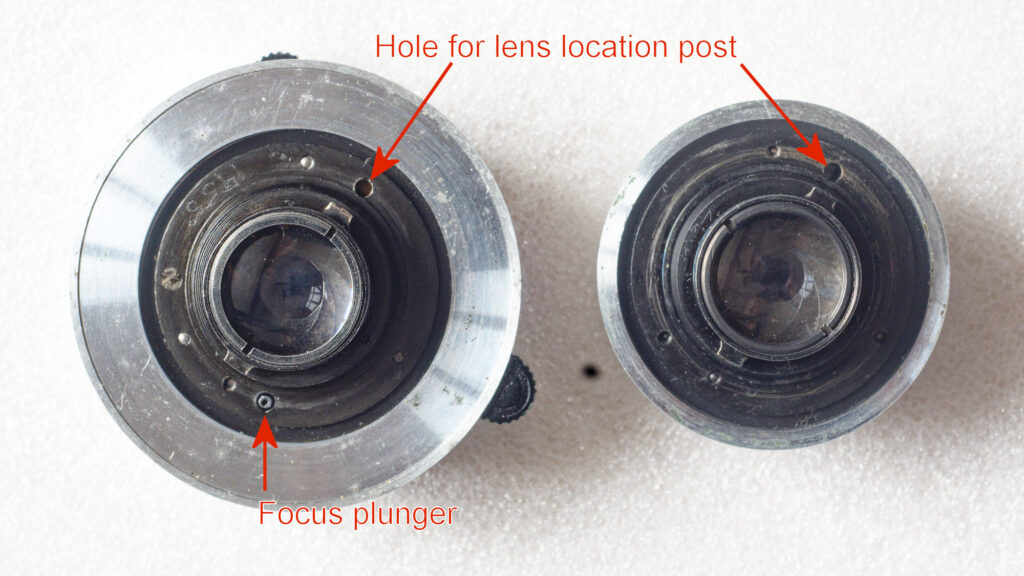
The 45mm f/2.8 lens seems to be the same on both cameras, although the version for the Agima has a larger casing, along with the extra bits to transfer focus information. The Agima lens seems to settle better on its camera if it is focused closer when being mounted. The Agima lens has two plastic tabs for diaphragm and focus. The lenses are interchangeable between both camera models, but you obviously only get a coupled rangefinder by using the Agima with its lens.
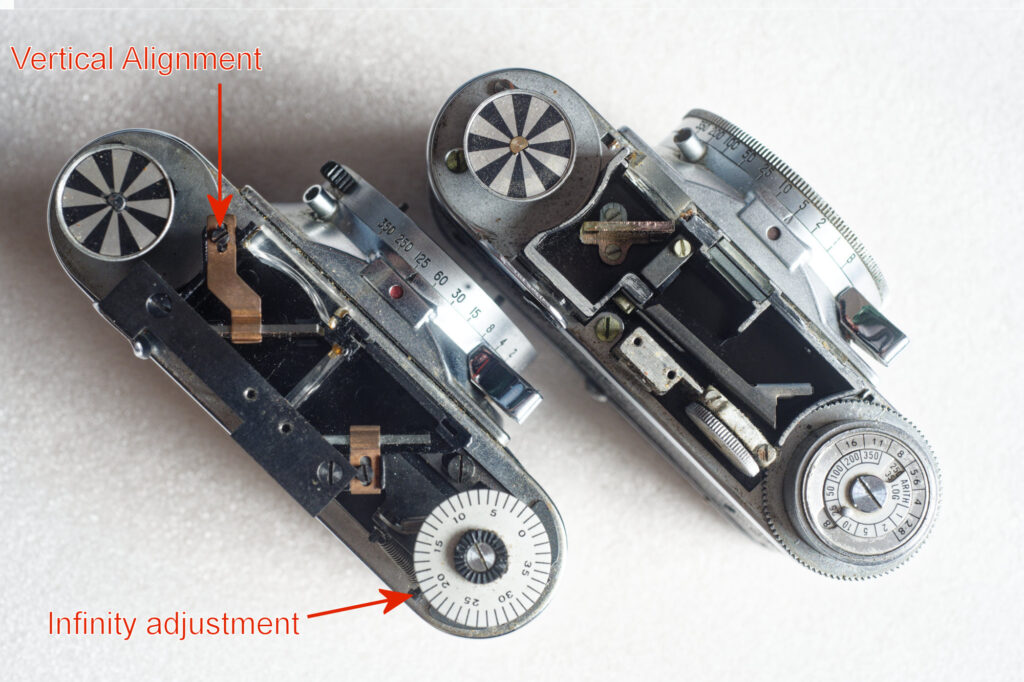
Top plate removal is relatively easy with both cameras, just requiring the removal of the two screws that hold the cold shoe in place. The adjustment for setting infinity on the rangefinder of the Agima is accessible through a small hole in the back of the camera, but for some reason, the adjustment for vertical alignment has a little metal cover inside the top plate. This has to be the most awkward vertical alignment adjustment I’ve come across, as you need to slacken off the screw that holds the brass strip, then shift the brass strip so that it changes the vertical angle of the semi-silvered mirror in the viewfinder. This is difficult through a small hole with the top on, but with the top off you lose the eyepiece optics so you can’t see where the alignment is in real time. In the end, I put up with the alignment being slightly out.
You may also notice that they changed the markings on the shutter speed dial from 1-2-5-10-25-50-100-200 to 1-2-4-8-15-30-60-125-250. The engravings are nominal as the shutter is continuously variable.
Viewfinder
The big bonus of the Agima over the Agimatic is the viewfinder, which is big and bright.

The viewfinder also features a coupled rangefinder, which, for all its vertical alignment issues, is still very welcome and offers an increase in base in comparison to the uncoupled unit in the Agimatic.

Bright-frame accuracy is OK, although it’s not as generous at the top as elsewhere in the frame.
Photos





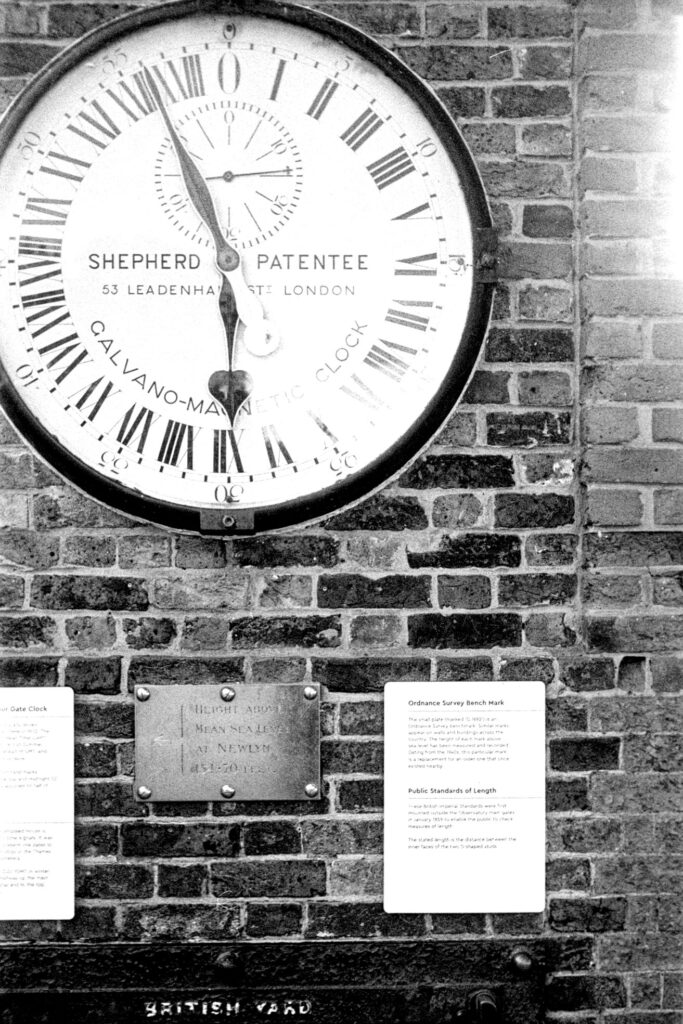

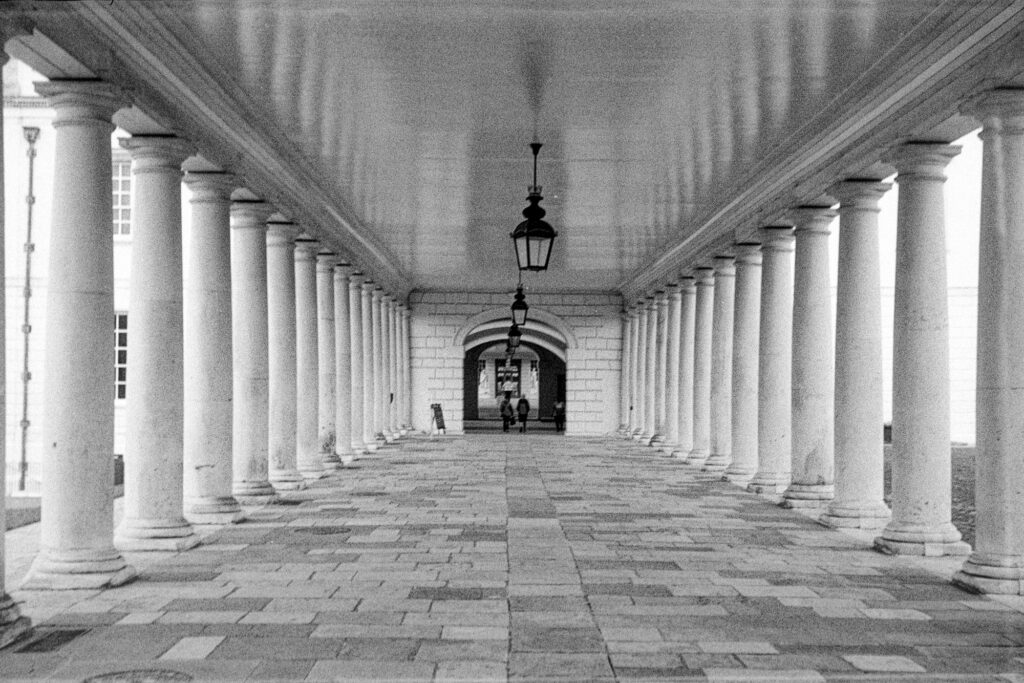
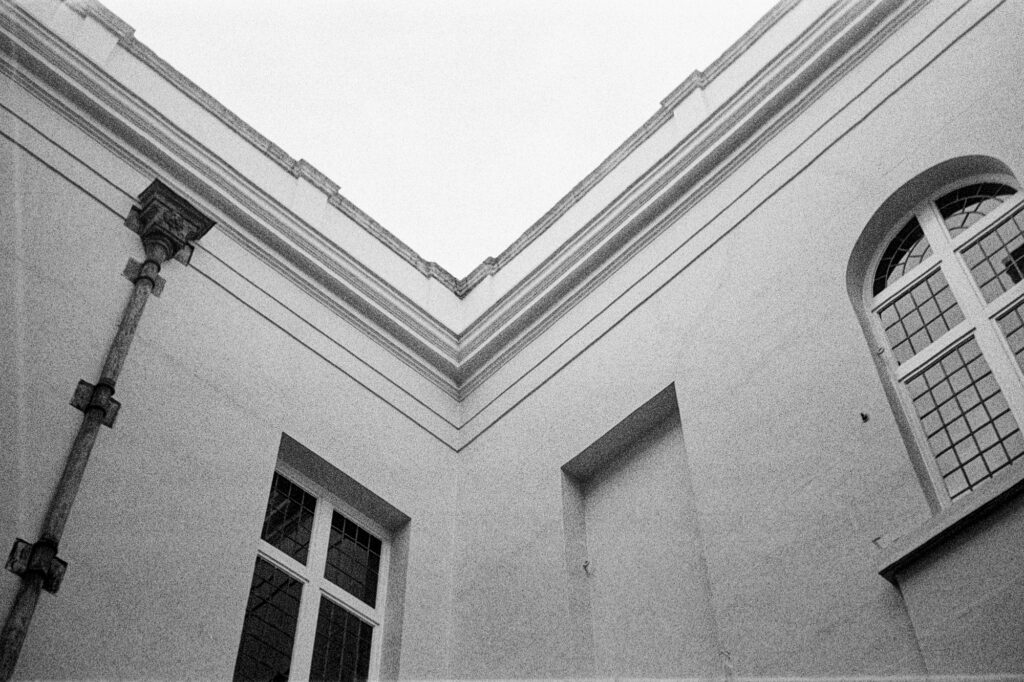

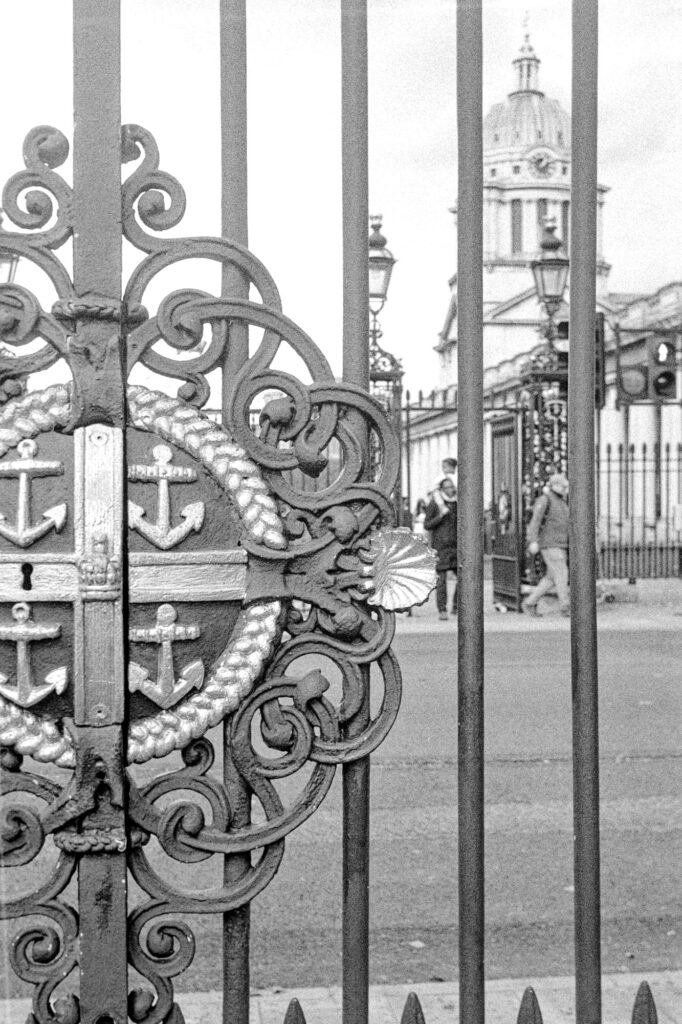
Conclusion
The Agima is a nice little camera. The whole shutter-release-in-the-first-bit-of-wind-on seems strange at first, but you get used to it. I seem to have settled on taking the picture, letting the lever come back up and then pressing all the way down to wind on and re-cock the shutter, rather than doing it all in one movement.
The other unusual feature of these cameras is the rewind, which works faultlessly on this particular Agima, gently easing the film back in to the cassette about 1/2 a frame per pull, without any of the sprocket straining issues I found on my Agimatic. Unfortunately half a frame per operation means you are shifting that lever 72 time to rewind a standard roll – and the camera doesn’t give you an indication of when it has finished rewinding – a bit of a blow for those who like to leave the film leader out of the cassette and leaving you with the possibility of opening the back before the film is fully rewound. I ended up (as with the Agimatic) opening the camera in a dark bag to be sure.
The viewfinder is a big improvement on the Agimatic, and a lot of the quirks (such as the manual frame counter that can’t be reset once the back is on) have been thoughtfully designed out. The rangefinder works, and the extinction meter is not missed.
Things that don’t work quite as well include the plastic tabs to set shutter speed, aperture and focus. These have been spaced out so that they occupy the left, right and bottom of the lens surround, but the one for focus is awkwardly placed and the shape of the tabs is not ergonomic. Unfortunately, you also have to get used to holding the camera ‘just so’ in order for your shooting finger not to block the rangefinder window.

Add in the adjusting of the focusing tab with your left hand, and that corner of the camera is getting very busy. I ended up gripping the smooth metal of the front of the lens to focus.
I remain impressed by the Engineers of AGI in Croydon back all those years ago: their shutter blades may look crude, but the shutter still works well after 65 years. I’d have been impressed even if they hadn’t made every bit of the camera in that Purley Way factory. Of the two cameras, I find the Agima the more practical camera, but it is not as quirky and charming as the Agimatic.
A third shot (Agimb?) could have solved some of these issues. The viewfinder could have been repositioned to move the rangefinder window over a bit, the tabs for the controls could have been shaped better, with the focus tab switched to the underside of the lens. Even then, it would still have been quite ugly. That they did not produce a third model makes me suspect that this was just an example of a concept having been taken just about as far as it would go.
AGI stopped making cameras fairly early on in the 60s and moved to Poole in Dorset in the 1990s. The company (still trading as AGI and as Trident) seems to be thriving as a supplier of runway lighting systems and marine navigation equipment.
Share this post:
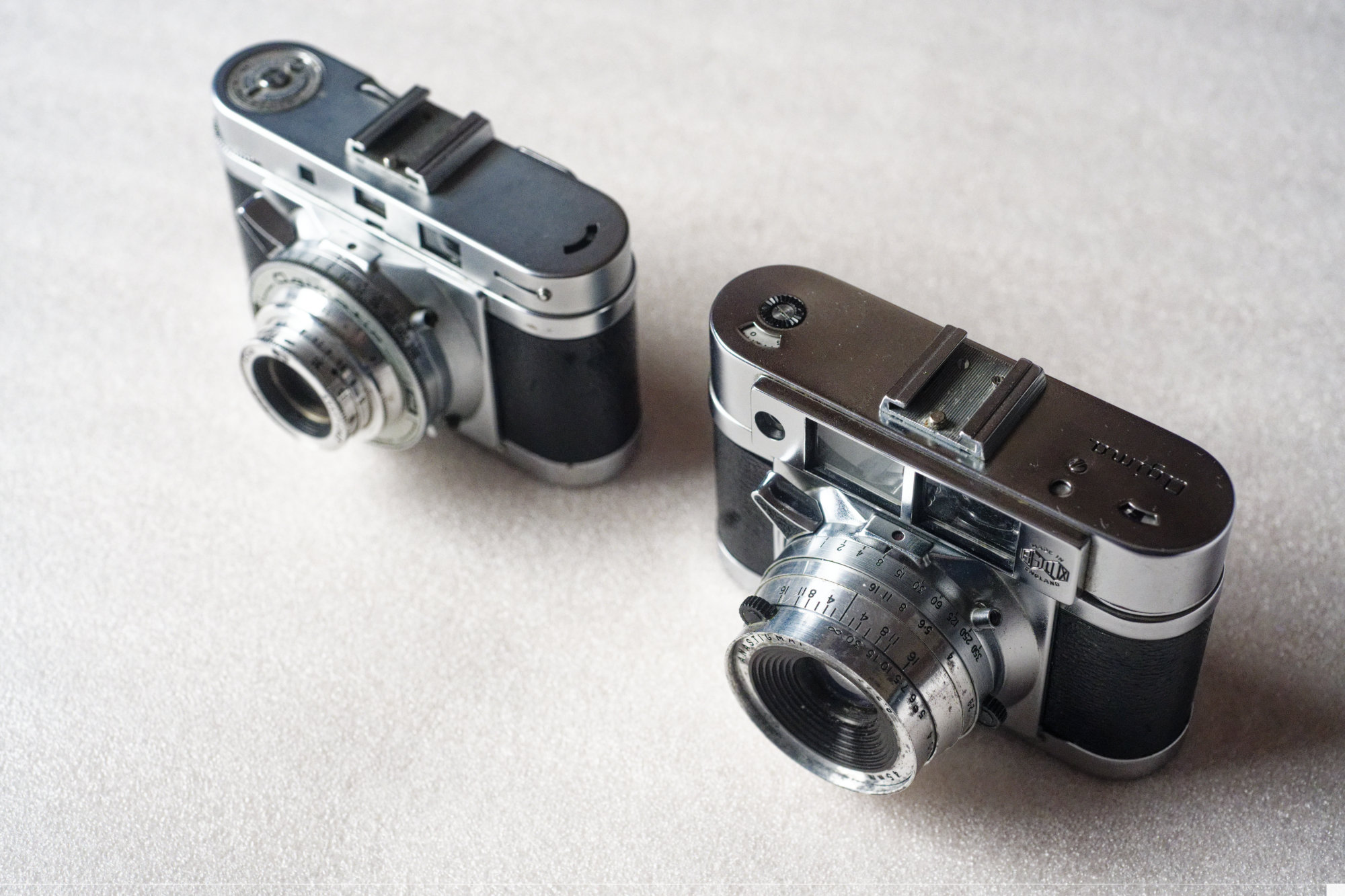
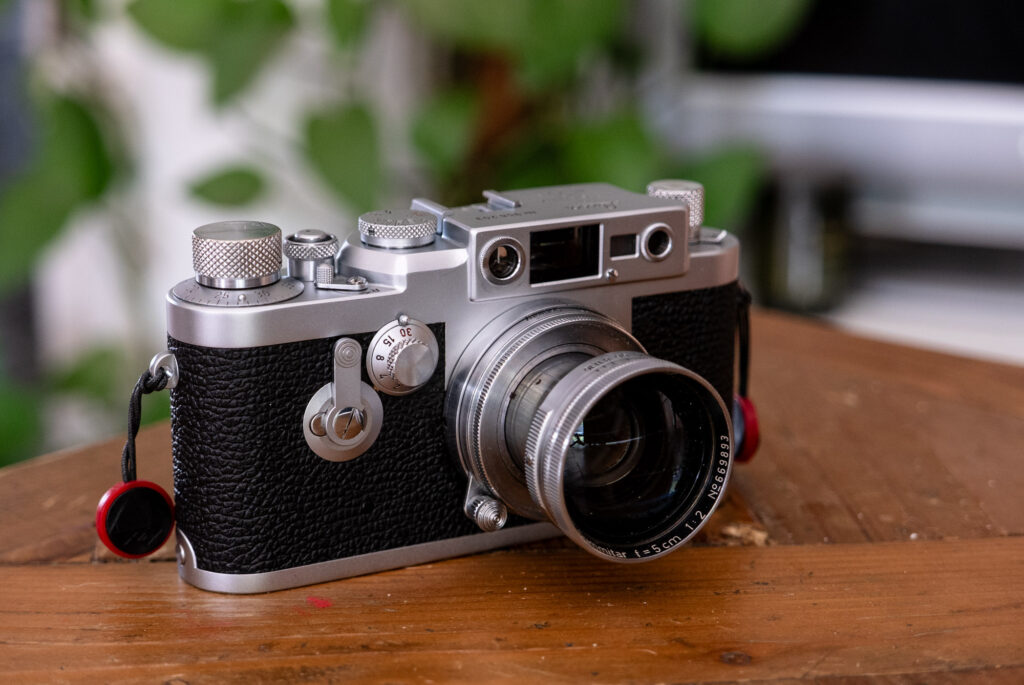
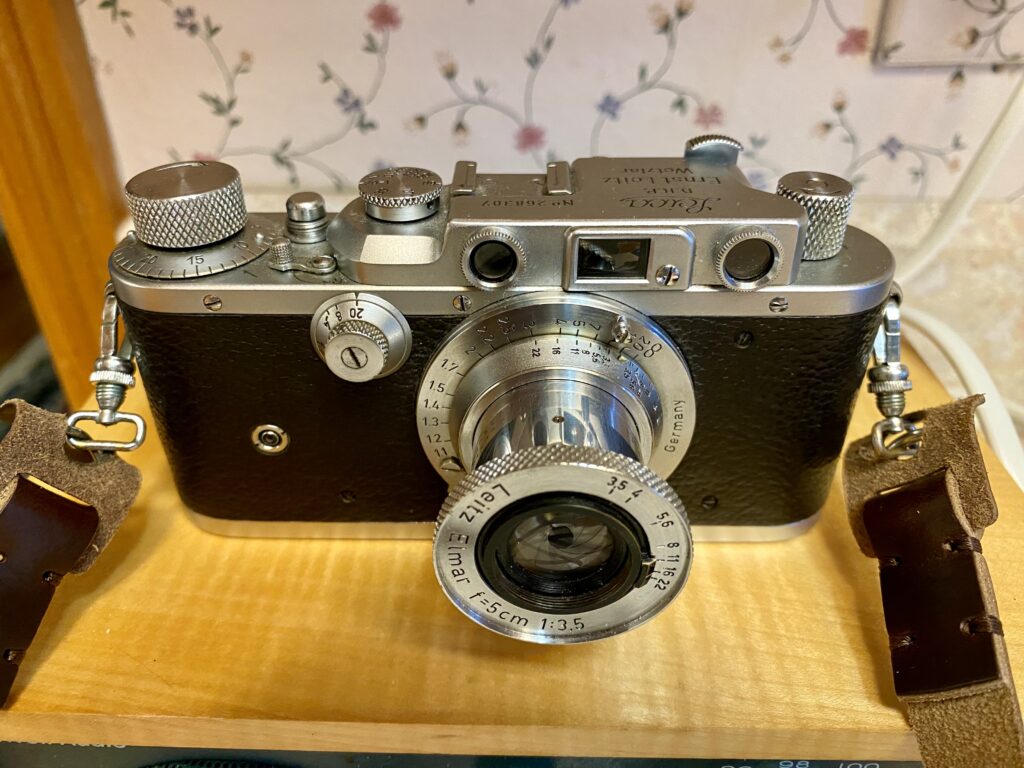
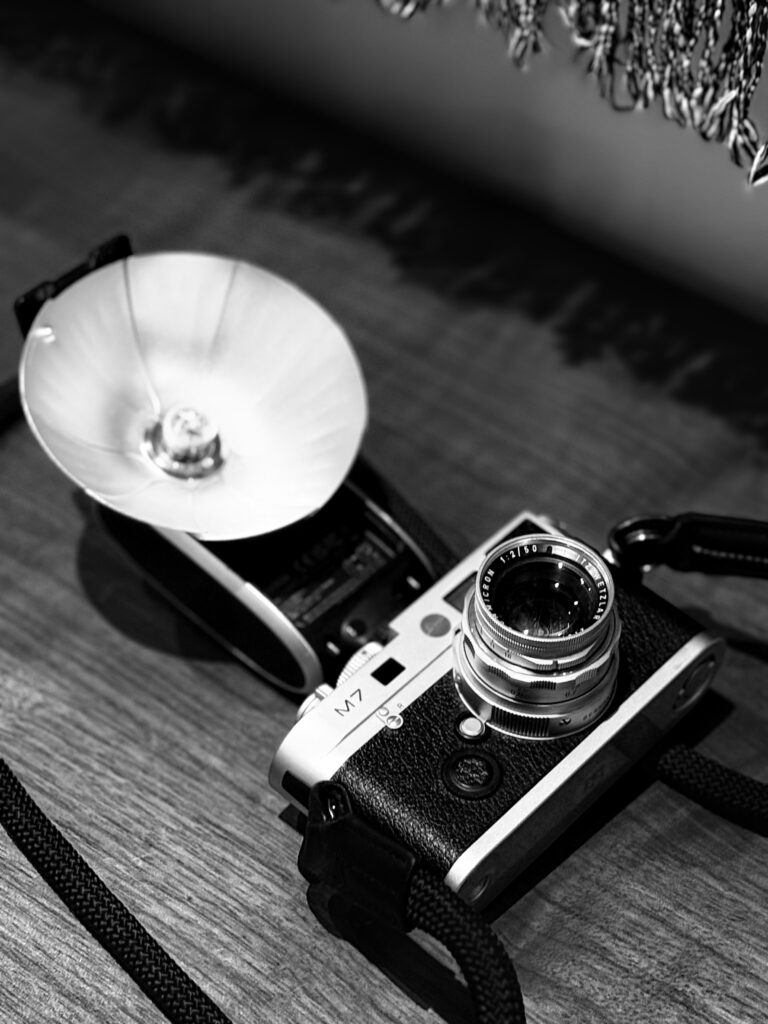




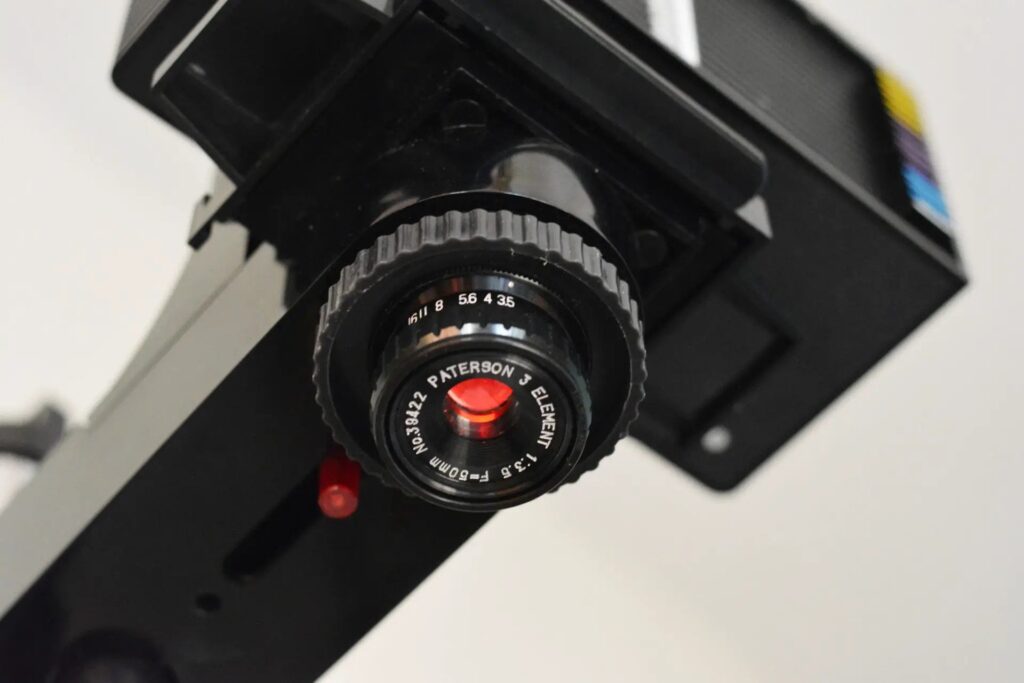
Comments
Michael Zwicky-Ross on Agima – AGI’s follow-up to the Agimatic
Comment posted: 10/11/2025
Comment posted: 10/11/2025